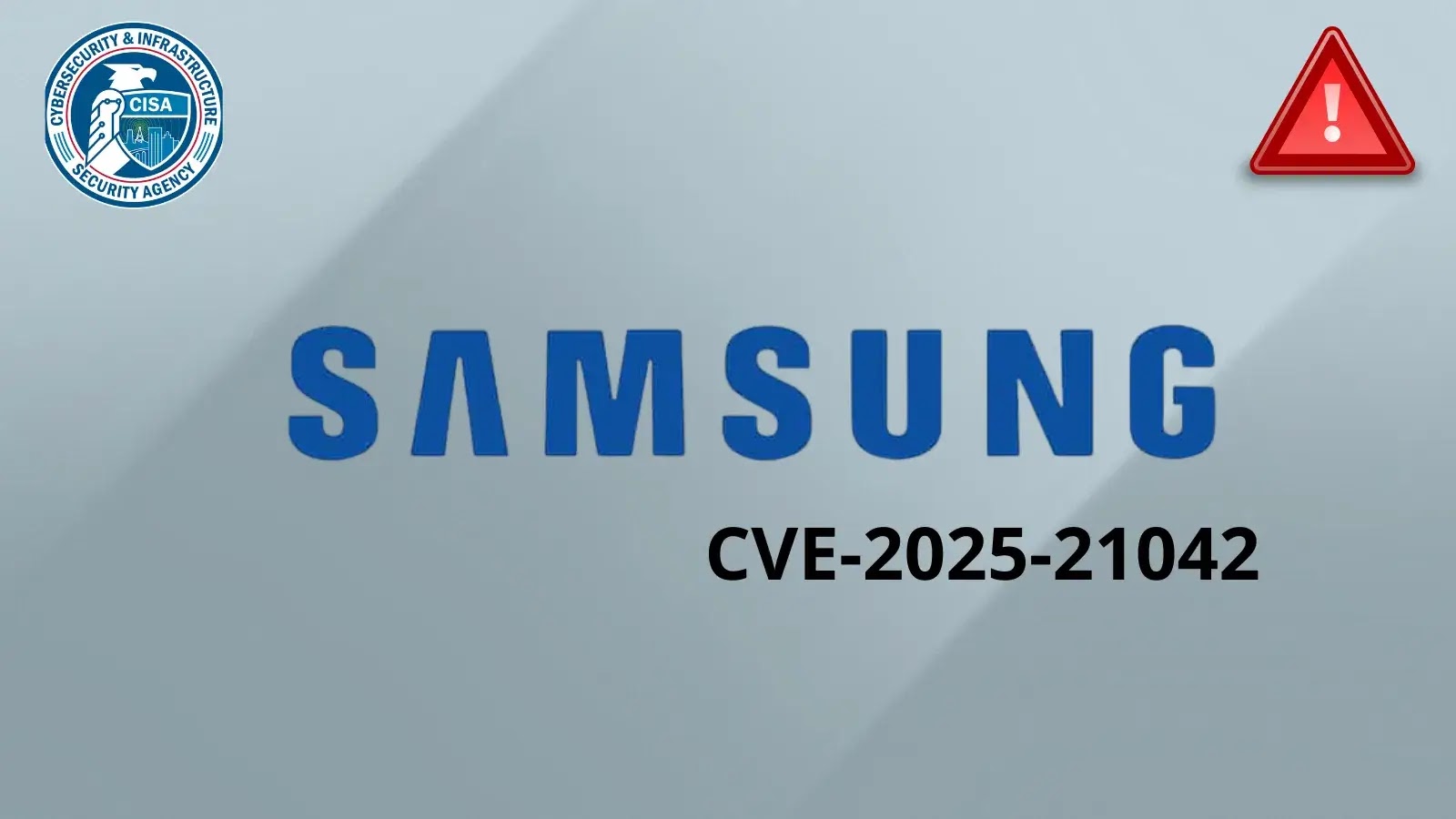Critical Zero-Day Vulnerability in Samsung Devices Actively Exploited
The Cybersecurity and Infrastructure Security Agency (CISA) has recently added a critical zero-day vulnerability affecting Samsung mobile devices to its Known Exploited Vulnerabilities (KEV) catalog. This vulnerability, identified as CVE-2025-21042, is an out-of-bounds write flaw located in the `libimagecodec.quram.so` library. It allows remote attackers to execute arbitrary code on vulnerable devices without any user interaction, posing a significant threat to users worldwide.
Understanding the Vulnerability
CVE-2025-21042 is categorized under CWE-787, which pertains to out-of-bounds write errors. Such vulnerabilities occur when a program writes data outside the boundaries of allocated memory, leading to memory corruption. In this specific case, the flaw resides in the `libimagecodec.quram.so` library, a component responsible for processing image files on Samsung devices. Exploitation of this vulnerability can result in unauthorized code execution, potentially granting attackers full control over the affected device.
Active Exploitation in the Wild
CISA’s inclusion of CVE-2025-21042 in its KEV catalog indicates that this vulnerability is not just a theoretical risk but is being actively exploited in real-world attacks. While detailed information about the specific attack campaigns remains limited, the ability for remote code execution without user interaction makes this vulnerability particularly dangerous. Attackers could leverage this flaw to install malware, steal sensitive information, or gain unauthorized access to personal and corporate data.
Implications for Users and Organizations
The exploitation of CVE-2025-21042 poses several risks:
– Data Theft: Attackers can access personal information, including contacts, messages, and financial data.
– Device Control: Malicious actors may gain full control over the device, allowing them to install additional malware or use the device as a launchpad for further attacks.
– Network Compromise: Compromised devices can serve as entry points into corporate networks, potentially leading to broader organizational breaches.
CISA’s Directive and Recommendations
In response to the active exploitation, CISA has mandated that federal agencies apply security patches and mitigations by December 1, 2025, as per Binding Operational Directive 22-01. This directive underscores the urgency of addressing this vulnerability to prevent potential compromises.
Steps for Users to Protect Their Devices
Samsung users are strongly advised to take the following actions:
1. Check for Security Updates: Regularly verify and install any available security updates for your device.
2. Download from Trusted Sources: Only install applications from reputable sources, such as the Google Play Store, to minimize the risk of downloading malicious software.
3. Monitor Device Activity: Stay vigilant for any unusual behavior on your device, such as unexpected app installations or performance issues, which could indicate a compromise.
Samsung’s Response and Previous Vulnerabilities
Samsung has been proactive in addressing security vulnerabilities. In September 2025, the company released a security update that addressed another critical zero-day vulnerability, CVE-2025-21043, also found in the `libimagecodec.quram.so` library. This previous flaw similarly allowed remote code execution and was actively exploited before the patch was issued.
Broader Context of Mobile Security Threats
The discovery and exploitation of vulnerabilities like CVE-2025-21042 highlight the ongoing challenges in mobile device security. As smartphones become increasingly integral to personal and professional life, they become attractive targets for cybercriminals. Users must remain vigilant and proactive in maintaining their device security.
Conclusion
The active exploitation of CVE-2025-21042 serves as a stark reminder of the importance of timely software updates and cautious digital practices. By staying informed and adhering to recommended security measures, users can significantly reduce their risk of falling victim to such vulnerabilities.



